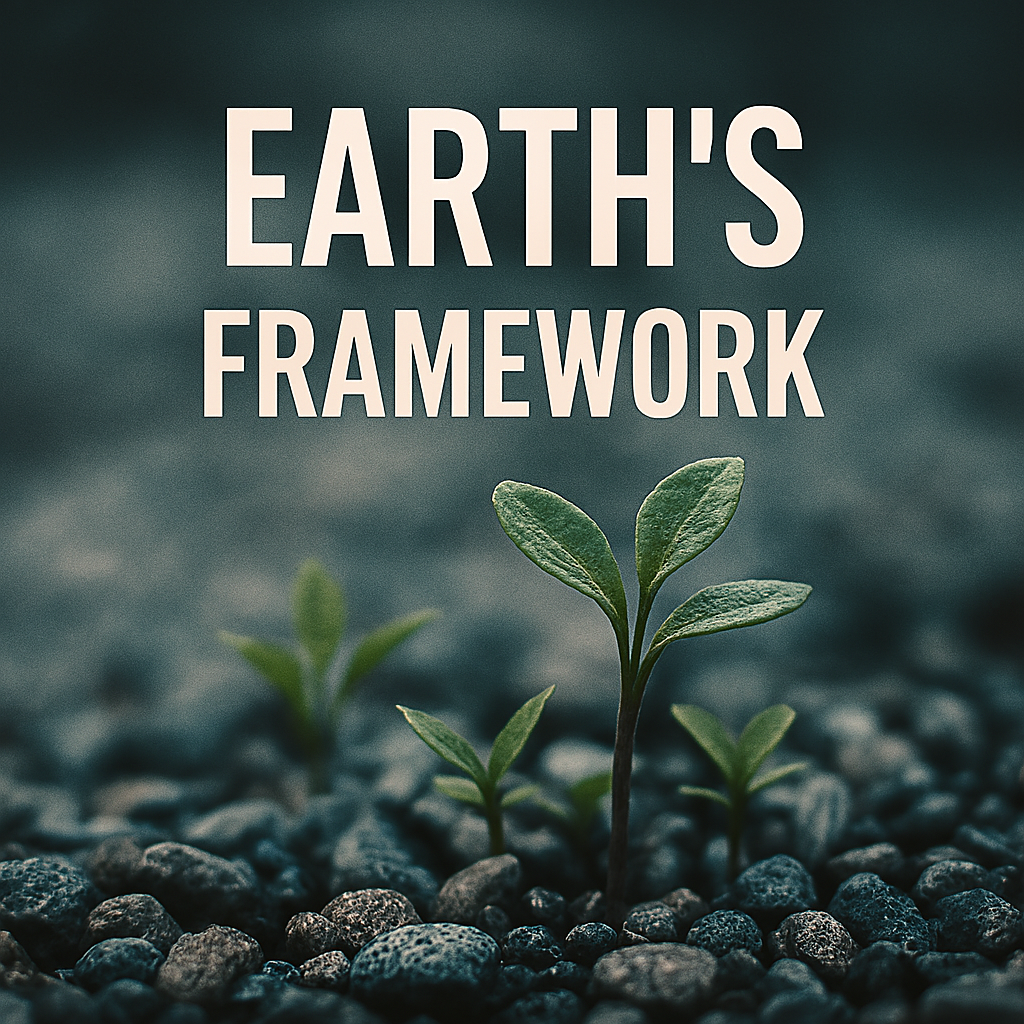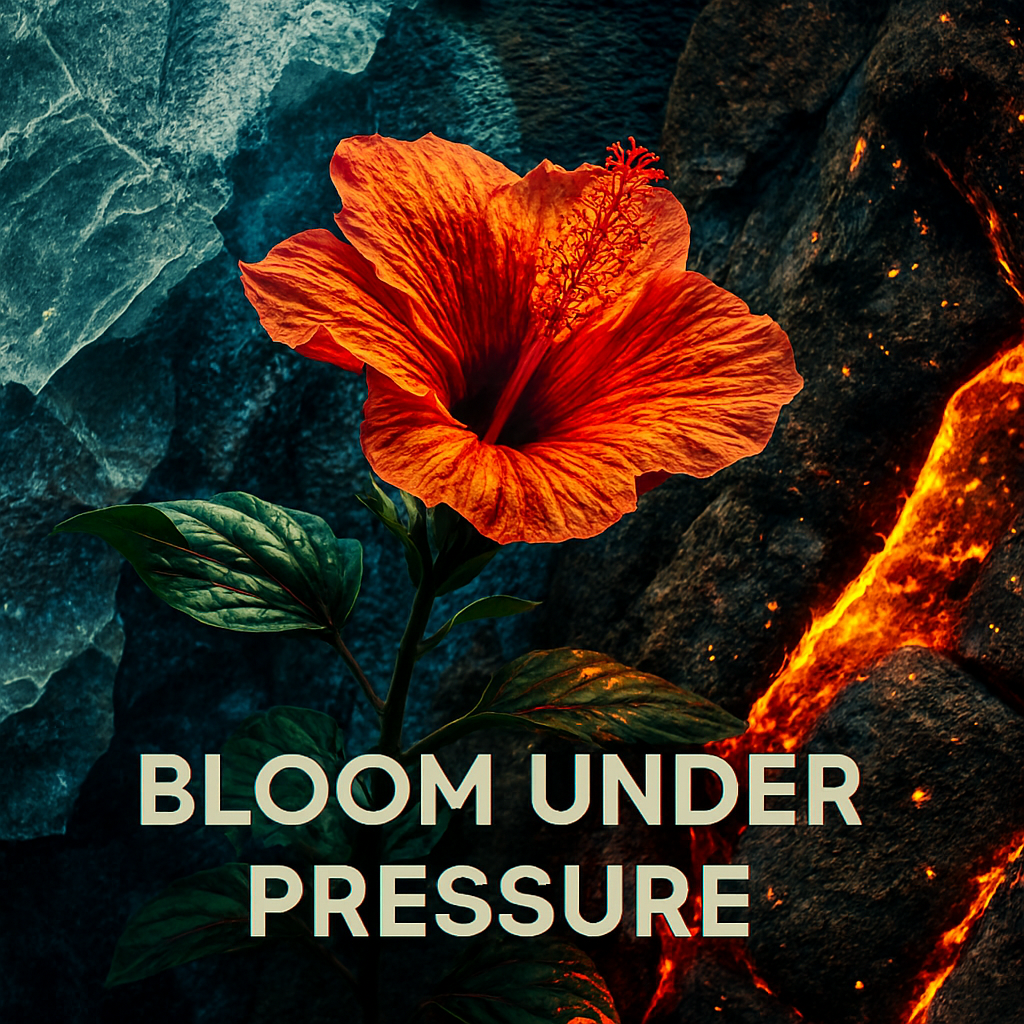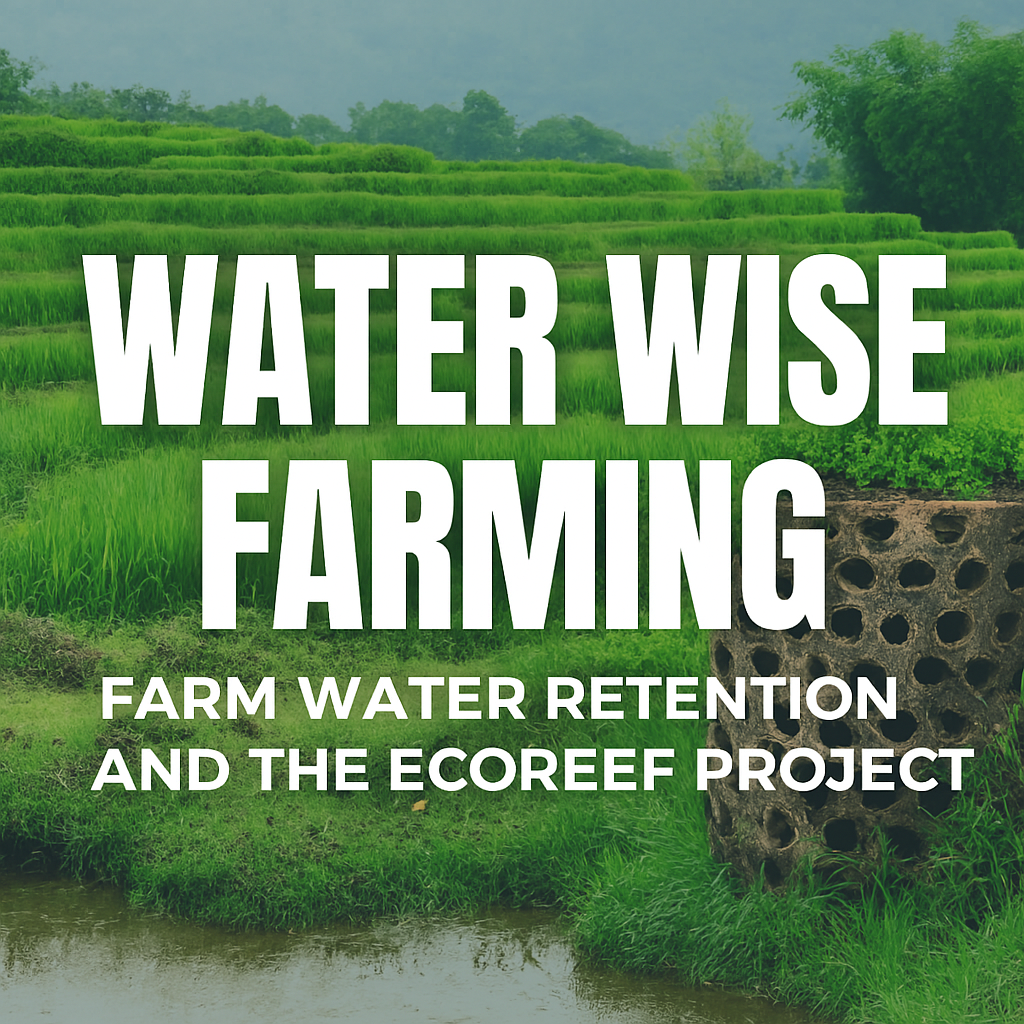Why Shallow Waterways Matter
Shallow waterways are ecological crossroads where land meets liquid movement. They host amphibians, aquatic plants, insects, and juvenile fish. These zones are often overlooked in restoration efforts, yet they hold immense biodiversity. Seasonal flooding, sediment exchange, and light penetration make them dynamic and fragile. Human activity—drainage, agriculture, urban runoff—often disrupts their balance. EcoReefs offer a regenerative scaffold to restore this edge zone. Their biodegradable structure supports both aquatic and terrestrial life. They stabilize banks, filter water, and create microhabitats. In shallow systems, small interventions yield large ecological returns. EcoReefs become quiet catalysts for healing.
Designing for Shallow Depths
EcoReefs in shallow waterways are tailored for low-flow, high-light environments. Materials are selected for buoyancy, porosity, and root compatibility. Coconut coir, jute, and untreated wood form the core scaffold. Stones and clay anchor the reef without impeding flow. The design includes cavities for frogs, insects, and small fish. Surface textures encourage moss, algae, and microbial colonization. Lightweight modules allow hand placement without machinery. Their form adapts to seasonal water levels and sediment shifts. Each reef becomes a living patchwork of regeneration. Shallow doesn’t mean simple—it means sensitive.
Table – Material Adaptations for Shallow Waterways
| Material | Function in Shallow Zones | Degradation Time | Ecological Role |
|---|---|---|---|
| Coconut Coir | Moisture retention and root support | 12–18 months | Plant anchoring |
| Jute Matting | Surface texture and erosion control | 6–12 months | Microbial colonization |
| Clay Discs | Anchoring and nutrient exchange | Permanent | Mineral enrichment |
| Untreated Wood | Structure and shade | 24–36 months | Amphibian shelter |
Supporting Amphibians and Invertebrates
Shallow waterways are prime habitat for frogs, dragonflies, and aquatic beetles. EcoReefs offer shaded cavities, moist surfaces, and egg-laying zones. Frogs use the reef edges to call, mate, and spawn. Insects colonize algae-rich surfaces and feed on detritus. These species form the base of the food web, supporting birds and fish. The reef’s texture mimics natural debris piles and root tangles. As vegetation grows, it creates layered microhabitats. EcoReefs restore the complexity lost to dredging and channelization. Amphibians return as indicators of ecological health. Their chorus becomes the soundtrack of regeneration.
Shallow Depths Stabilizing Sediment Preventing Runoff
Stabilizing Sediment and Preventing Runoff
Shallow waterways are vulnerable to sediment overload and nutrient runoff. EcoReefs trap particles and slow water velocity near the banks. Their structure encourages sediment deposition and root penetration. Native plants colonize the reef, binding soil and filtering nutrients. This reduces algal blooms and improves water clarity. The reefs act as living silt fences without synthetic materials. Over time, they become vegetated buffers against erosion. Their placement is strategic—at bends, inlets, and drainage points. EcoReefs transform runoff zones into regeneration corridors. They stabilize the land-water interface with symbolic and ecological precision.
Table – Sediment Stabilization Functions
| Function | EcoReef Mechanism | Benefit to Waterway | Long-Term Impact |
|---|---|---|---|
| Particle Trapping | Porous structure slows flow | Reduces turbidity | Clearer water |
| Root Anchoring | Vegetation binds soil | Prevents erosion | Stable banks |
| Nutrient Absorption | Plant uptake of runoff | Limits algal blooms | Healthier ecosystems |
| Microbial Filtering | Biofilm development | Breaks down pollutants | Improved water chemistry |
Flood Resilience During Seasonal Change
Seasonal Adaptation and Flood Resilience
EcoReefs in shallow zones are designed to flex with seasonal changes. During dry spells, they retain moisture and support plant survival. In floods, they buffer flow and prevent bank collapse. Their modularity allows repositioning or partial submersion. Materials expand and contract with temperature and humidity. Algae and mosses respond to light cycles, creating seasonal food webs. Frogs and insects shift usage based on water levels. EcoReefs do not resist nature—they move with it. Their resilience lies in their softness, not rigidity. Restoration becomes a seasonal dance, not a static fix.
Community Engagement and Education
Shallow water EcoReefs are ideal for community-led restoration. Their small size and low-impact installation invite participation. Schools, councils, and local groups build and place reef units. Workshops teach ecological principles through tactile experience. Children learn about frogs, roots, and water cycles by touching and observing. Signage explains the reef’s purpose and seasonal changes. Volunteers monitor species return and plant growth. Public art and storytelling deepen emotional connection. EcoReefs become symbols of shared care and ecological literacy. Restoration becomes a community ritual, not just a technical task.
Table – Community Roles in Shallow Waterway Projects
| Role Type | Activity Involved | Impact on Project | Example Participants |
|---|---|---|---|
| Students | Reef placement and monitoring | Youth engagement | Primary schools, scouts |
| Artists | Visual storytelling | Emotional resonance | Muralists, illustrators |
| Elders | Cultural guidance | Ethical grounding | Indigenous leaders |
| Volunteers | Maintenance and data collection | Long-term stewardship | Landcare, bushcare groups |
Symbolic Resonance in Edge Zones
Shallow waterways are symbolic thresholds—between land and flow, stillness and movement. EcoReefs restore this edge with humility and intention. Their presence invites reflection on fragility and resilience. Editorially, they anchor stories of renewal and community care. The reef’s textures—fiber, moss, water—evoke emotional depth. They become metaphors for healing, patience, and reciprocity. In signage and campaigns, they offer visual rhythm and narrative clarity. EcoReefs make the invisible visible—the slow return of life. They turn forgotten edges into sacred spaces. Restoration becomes not just ecological, but symbolic.
Applications in Urban and Agricultural Landscapes
Shallow water EcoReefs adapt to both urban creeks and farm drainage channels. In cities, they soften concrete edges and restore biodiversity. On farms, they buffer runoff and support riparian vegetation. Their modularity allows placement in bioswales, retention ponds, and stormwater outlets. They integrate into green infrastructure and regenerative agriculture. EcoReefs reduce the need for synthetic erosion control. Their presence supports pollinators, amphibians, and aquatic plants. In parks, they become educational and therapeutic zones. Restoration becomes visible, tactile, and participatory. EcoReefs bridge ecological science and everyday landscapes.
Monitoring and Adaptive Feedback Loops
Tracking the Impact of EcoReefs in Shallow Systems
Monitoring is essential to understand how EcoReefs perform in shallow waterways. Teams use visual surveys, soil probes, and water clarity sensors. Citizen scientists contribute seasonal data through mobile apps and field journals. Drones capture aerial imagery to track vegetation spread and sediment stability. If colonization is slow, materials or placement patterns are adjusted. If erosion persists, reef density is increased. Adaptive feedback ensures each site evolves toward optimal health. Monitoring builds trust with stakeholders and deepens community engagement. It also creates a living archive of ecological recovery. EcoReefs become part of a transparent, iterative restoration strategy.

Editorial Integration and Campaign Storytelling
Using EcoReefs to Anchor Regenerative Narratives
EcoReefs offer powerful visual and symbolic anchors for editorial campaigns. Their textures—fiber, moss, water—evoke emotional depth and ecological clarity. Campaigns focused on climate, community, or healing use reef imagery to build trust. Editorial modules might include seasonal visuals, community quotes, and ecological data. The reef’s lifecycle mirrors narrative arcs—beginning, transformation, and resolution. EcoReefs can be featured in print, digital, and experiential formats. Their modularity supports adaptive storytelling across platforms. Restoration becomes a shared story, not just a technical fix. EcoReefs make abstract concepts like regeneration and resilience tangible. They turn ecological recovery into editorial infrastructure.
Multispecies Integration and Habitat Layering
Designing for Complexity in Shallow Zones
EcoReefs support layered habitats for multiple species. Frogs shelter in moist cavities, while insects colonize algae-rich surfaces. Fish use shaded zones for spawning and refuge. Birds perch on emergent vegetation and feed on reef insects. Microbial communities thrive in porous textures and organic binders. Each species interacts with the reef differently across seasons. This complexity increases ecological resilience and biodiversity. EcoReefs restore the layered richness lost to channelization and runoff. Their design mimics natural debris piles, root tangles, and sediment bars. Restoration becomes a multispecies choreography, not a single-species fix.
Table – Multispecies Habitat Functions
| Species Group | EcoReef Feature Used | Ecological Function | Seasonal Behavior |
|---|---|---|---|
| Frogs | Moist cavities and shade | Egg-laying and shelter | Active in spring/summer |
| Insects | Algae-rich surfaces | Pollination and decomposition | Year-round activity |
| Fish | Shaded zones and root tangles | Spawning and refuge | Migratory and seasonal |
| Birds | Emergent vegetation and perches | Feeding and nesting | Breeding in warmer months |
Edge-Zone Regeneration
EcoReefs as Thresholds of Renewal
Shallow waterways are thresholds—between land and flow, stillness and movement. EcoReefs restore this edge with humility, texture, and intention. Their presence invites reflection on fragility, resilience, and reciprocity. They become symbols of healing after disruption. In editorial layouts, they offer rhythm, clarity, and emotional resonance. In ecological terms, they rebuild complexity and support multispecies return. Their biodegradable nature reminds us that restoration should dissolve, not dominate. EcoReefs turn forgotten edges into sacred spaces. They root memory into place and invite communities to care. Regeneration begins at the edge—and EcoReefs make that edge visible.
EcoReefs In Shallow Waterways Preventing Runoff Stopping Erosion
Integration with Riparian Buffer Zones
EcoReefs reinforce riparian buffers by stabilizing soil and supporting native vegetation while stopping erosion. Their placement along shallow depths ofbanks reduces erosion and filters runoff. Root systems anchored in reef modules absorb excess nutrients. This prevents algal blooms and improves downstream water quality. The reefs also trap sediment, maintaining channel depth and clarity. Their biodegradable structure complements existing buffer plantings. EcoReefs extend the functional width of riparian zones without heavy infrastructure and flood resilience. They support amphibians, insects, and aquatic plants in transitional habitats. Restoration becomes modular, scalable, and low-impact. EcoReefs strengthen the ecological spine of shallow waterways and preventing runoffs.
Compatibility with Stormwater Management Systems
EcoReefs integrate seamlessly into urban stormwater channels and retention basins. Their porous design slows flow and reduces peak discharge velocity. This mitigates flash flooding and downstream sediment transport. Vegetation supported by the reef improves infiltration and evapotranspiration. EcoReefs also enhance pollutant breakdown through microbial activity. Their modularity allows placement in bioswales, culvert outlets, and detention zones. Installation requires minimal excavation and no synthetic materials. EcoReefs offer a nature-based solution for urban hydrology challenges. They improve function while adding ecological and visual value. Restoration becomes part of infrastructure planning.
Table – EcoReef Functions in Stormwater Systems
| Application Area | EcoReef Role | Benefit Delivered | Integration Method |
|---|---|---|---|
| Bioswales | Flow buffering and filtration | Reduces runoff velocity | Surface placement |
| Retention Basins | Sediment capture | Improves water clarity | Anchored modules |
| Culvert Outlets | Erosion control | Stabilizes discharge zones | Edge reinforcement |
| Urban Channels | Habitat creation | Supports biodiversity | Linear reef arrays |
Enhancing Aquatic Plant Establishment
EcoReefs provide ideal conditions for aquatic plant colonization while stabilizing sediment in shallow depths. Their moisture-retentive materials support germination and root anchoring. Native reeds, sedges, and submerged species thrive on reef surfaces. As plants mature, they stabilize sediment and improve oxygenation. The reef’s structure protects young shoots from wave action and grazing. Over time, vegetation overtakes the reef, forming dense habitat zones. Plant diversity increases, supporting broader ecological recovery. EcoReefs act as nurse beds for aquatic flora. Restoration becomes self-sustaining through rooted complexity. Vegetation becomes both outcome and infrastructure.
Supporting Juvenile Fish and Amphibian Development
Shallow reef zones offer critical shelter for juvenile aquatic species. Cavities and shaded areas protect young fish from predators. Moist surfaces and submerged edges support amphibian egg-laying. Algae and detritus on reef surfaces provide early-stage food sources. These microhabitats improve survival rates and species recruitment. EcoReefs mimic natural debris piles and root tangles. Their presence increases population resilience in degraded systems. Seasonal monitoring shows consistent juvenile return to reef zones. Restoration supports life at its most vulnerable stages. EcoReefs become incubators for biodiversity.
Table – Species Supported by Shallow EcoReefs
| Species Group | Reef Feature Utilized | Ecological Function | Example Species |
|---|---|---|---|
| Juvenile Fish | Shaded cavities and algae zones | Predator avoidance | Galaxias, perch fry |
| Amphibians | Moist surfaces and root tangles | Egg-laying and shelter | Eastern banjo frog |
| Aquatic Insects | Detritus-rich textures | Feeding and reproduction | Mayflies, caddisflies |
| Native Plants | Moisture retention and anchoring | Germination and growth | Sedge, rush, eelgrass |
Low-Maintenance Restoration Strategy
EcoReefs are designed for minimal maintenance post-deployment. Their biodegradable materials require no removal or replacement. Vegetation overtakes the structure, eliminating the need for replanting. Sediment stabilization reduces ongoing erosion control efforts. Monitoring can be conducted visually or with basic sensors. Community groups can manage upkeep without specialized equipment. The reefs degrade naturally, leaving no synthetic residue. Maintenance becomes observation rather than intervention. EcoReefs offer a cost-effective, low-labor restoration model. Simplicity supports scalability.
Alignment with Waterway Management Policies
EcoReefs align with national and regional waterway restoration frameworks. Their design supports biodiversity targets, erosion control mandates, and water quality standards. Councils and catchment authorities can integrate reef modules into existing plans. EcoReefs meet criteria for nature-based solutions and climate adaptation. Their performance can be tracked using standard ecological indicators. Funding eligibility is enhanced by community engagement and measurable outcomes. EcoReefs offer a compliant, evidence-based restoration tool. Their modularity supports phased deployment across multiple sites. Restoration becomes policy-aligned and outcome-driven.













Leave a Reply